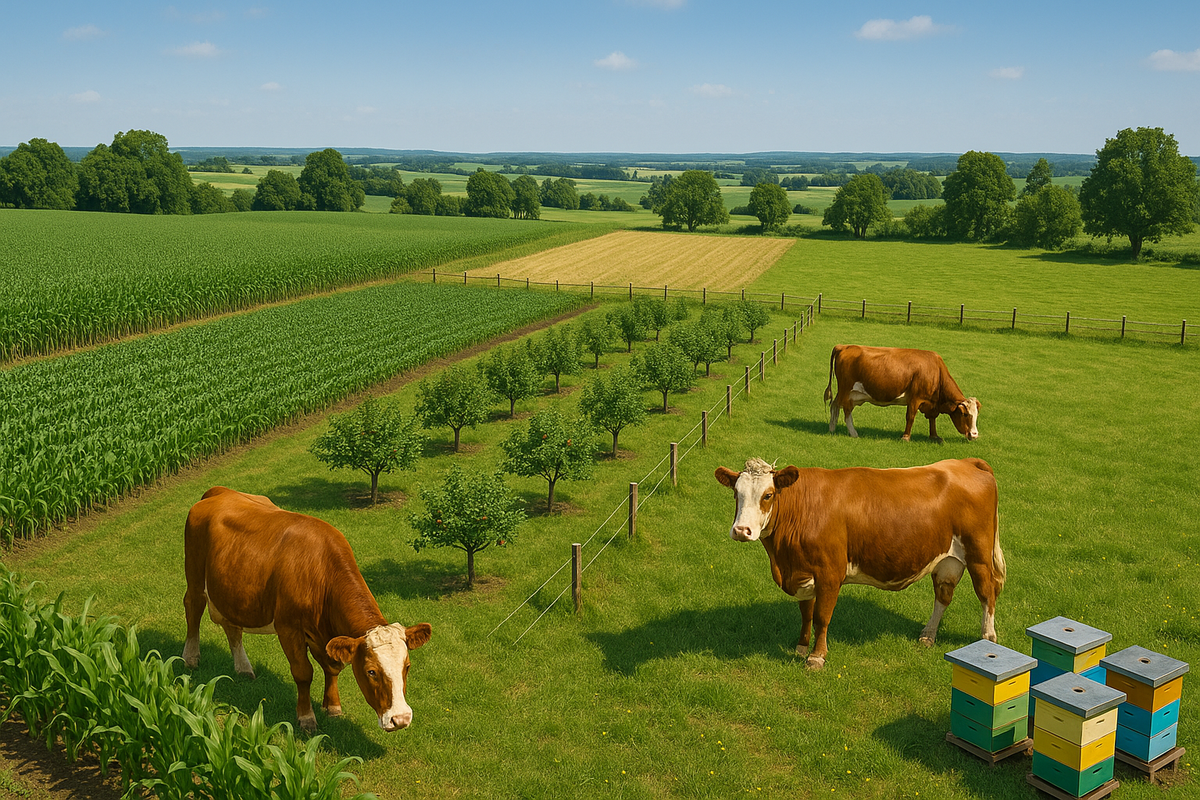
✍️ By Debbie Balfour | WBN News | August 22, 2025 | Click HERE for your FREE Subscription to WBN News and/or to be a Contributor.
Farmland investing is often overlooked by new and even seasoned investors who chase the flash of urban real estate. But here’s the truth: agricultural land holds incredible potential, and it can generate steady income when creatively divided and leased. Unlike residential or commercial properties, farmland offers multiple streams of revenue depending on how you choose to allocate the land.
Imagine this: one section leased for corn or soybeans, another for hay, a smaller portion for orchards, and even a few acres dedicated to beekeeping. Suddenly, your farmland is no longer a single-purpose investment—it becomes a diversified income engine.
One of the most powerful strategies is parcel leasing. Instead of renting the entire farm to one tenant, landowners can break up the acreage to suit different agricultural purposes. For example:
- Row Crops: Corn, wheat, or soybeans often require larger, open plots. Leasing this portion can provide consistent seasonal income.
- Orchards and Vineyards: Fruit trees, grapes, or nut orchards need smaller, more specialized parcels that typically generate higher per-acre lease rates.
- Hay and Livestock Grazing: Pastures can be rented for hay production or rotational livestock grazing, offering dependable annual contracts.
- Specialty Farming: Think organic vegetables, mushrooms, or lavender. These niche crops often bring premium returns and attract entrepreneurial tenants.
- Beekeeping: Even a few acres can host hundreds of hives. With pollinator demand rising, landowners can lease space to beekeepers or even operate the business themselves.
By diversifying the land’s use, you’re reducing risk. If one crop suffers from poor weather or low prices, the other leases the balance the income. Plus, farmland leases tend to be longer-term and less volatile than residential rentals, making them a great hedge against inflation.
Another overlooked advantage is the appreciation factor. Farmland, particularly in regions with strong water access and fertile soil, has consistently risen in value. While tenants generate income, your land quietly builds equity.
The best part? You don’t need to be a farmer to profit from farmland. You just need to structure smart leases and identify the right mix of tenants. Whether it’s crops, livestock, or buzzing hives of honeybees, farmland investing is a steady, reliable way to grow wealth while contributing to the food chain.
So, the next time you think real estate investing is only about houses, apartments, or office buildings, remember this: farmland is where long-term wealth quietly grows.
Debbie Balfour | Real Estate Investing Success Coach + Podcast Host
📍 Website: www.DebbieBalfour.com
📧 Email: Debbie@DebbieBalfour.com
🔗 LinkedIn: Debbie Balfour
▶️ YouTube Channel: youtube.com/@DebbieBalfour
Join the FREE Facebook Group: Let's Talk Real Estate Investing
TAGS: #farmland investing #farmland #income streams #agricultural leasing #real estate investing #farmland diversification #beekeeping business #WBN News Langley #WBN News Abbotsford #WBN News Okanagan #Debbie Balfour




